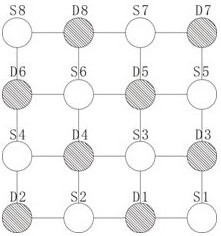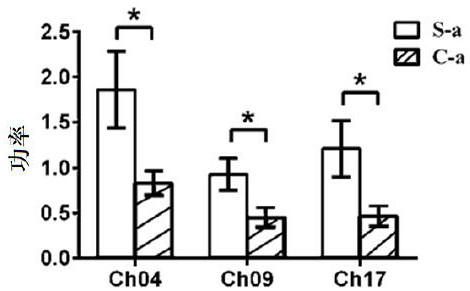A FNIRS Data Processing Method Based on Deception in Different Situations
A technology of data processing and behavior, which is applied in the fields of psychological devices, medical science, and spectral diagnosis, etc., can solve the problems of few applications and no references, and achieve the effect of wide application prospects
- Summary
- Abstract
- Description
- Claims
- Application Information
AI Technical Summary
Problems solved by technology
Method used
Image
Examples
Embodiment 1
[0052] Embodiment 1: see Figure 1-Figure 2b , a fNIRS data processing method based on deceptive behavior in different situations, including the following steps:
[0053] (1) Using brain fNIRS to collect behavioral experimental data of subjects:
[0054] Using a multi-channel fNIRS imaging system, a total of Q subjects were collected the deceptive behavior experiment data in the spontaneous state and the deceptive behavior experiment data in the controlled state;
[0055] (2) For the kth subject, k=1, 2..., Q, extract the fNIRS signal of each channel under different experimental conditions and carry out band-pass filtering, and HbO in the filtered fNIRS signal 2 The signal is segmented and averaged according to the experimental test trial, and the HbO after the segmental average of each channel is obtained 2 Data sequence x(n), n=1, 2..., N, N is the number of data points of trial;
[0056] (3) Calculate the Welch power spectrum of each channel x(n);
[0057] (4) Using the...
Embodiment 2
[0074] Example 2: see Figure 1 to Figure 7 , in order to better illustrate the method of the present invention, we recruited 25 subjects to carry out the experiment, including the following steps:
[0075] (1) Using brain fNIRS to collect honest behavioral experimental data of subjects, the experimental setting conditions are as follows:
[0076] (11) About the subjects:
[0077] The experiment recruited 25 participants, including 14 females and 11 males; aged between 19-22 years old; we took these 25 people as experimental subjects.
[0078] (12) Behavioral experiment tasks and process design:
[0079] The employed experimental paradigm consisted of two components: one involving spontaneous lying behavior and the other involving deception in a controlled situation. Spontaneous deception experiment behavior block contains 40 event-related trials, which are the smallest unit of psychological experiments, from stimulus initiation to response. The controlled experiment behav...
PUM
 Login to View More
Login to View More Abstract
Description
Claims
Application Information
 Login to View More
Login to View More - R&D
- Intellectual Property
- Life Sciences
- Materials
- Tech Scout
- Unparalleled Data Quality
- Higher Quality Content
- 60% Fewer Hallucinations
Browse by: Latest US Patents, China's latest patents, Technical Efficacy Thesaurus, Application Domain, Technology Topic, Popular Technical Reports.
© 2025 PatSnap. All rights reserved.Legal|Privacy policy|Modern Slavery Act Transparency Statement|Sitemap|About US| Contact US: help@patsnap.com



